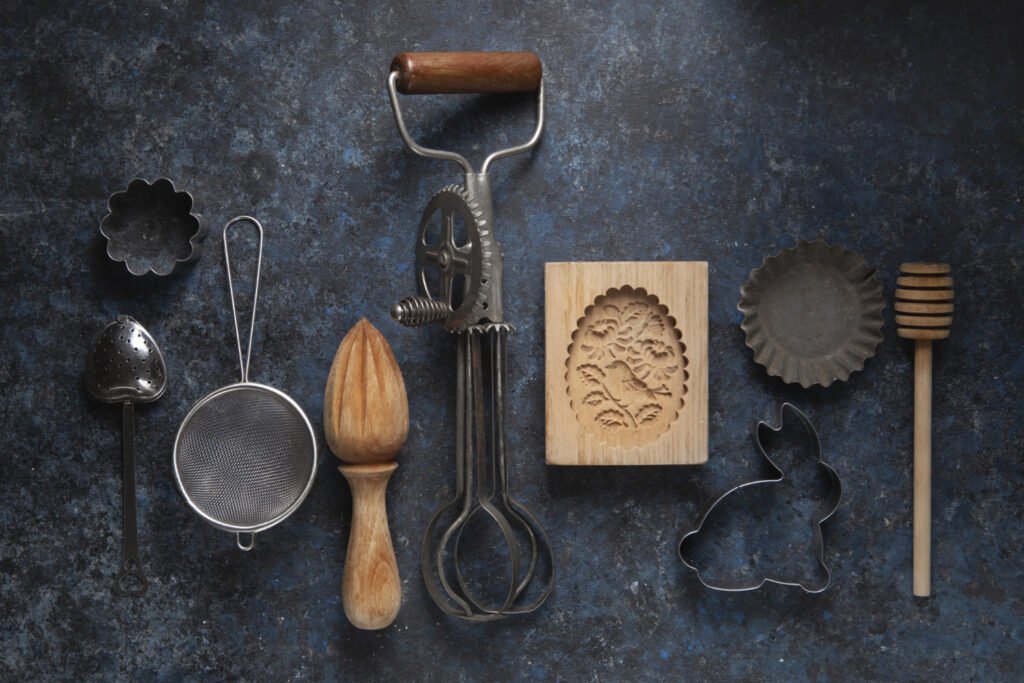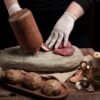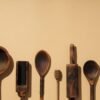Cooking with Fire, Bronze, and Imagination
Picture this: You’re standing in a small Bronze Age village nearly 3,500 years ago. Smoke drifts from a clay hearth. Children run by with baskets of grain, while a woman kneels near a fire, stirring a stew in a heavy bronze cauldron. Beside her, another cook flips flatbreads on a bronze griddle, while a younger helper grinds seeds with a stone quern.
Most of us think ancient kitchens were primitive, just fire and a pot. But when historians began uncovering Bronze Age cooking tools, they realized our ancestors were far more inventive than we imagined. From intricate cauldrons to roasting spits and bronze knives designed for butchering, these tools reveal not only what people ate, but also how entire cultures shaped meals, rituals, and traditions.
If you’ve ever wondered what life tasted like 4,000 years ago, these forgotten kitchen secrets bring us closer than any recipe book ever could.
Why This Topic Matters: Beyond Pots and Pans
The Bronze Age (roughly 3300–1200 BCE) marked one of humanity’s biggest leaps forward. For the first time, societies forged metal into tools that were tougher than stone and sharper than bone. This transformation didn’t just impact weapons or farming it changed kitchens forever.
Cooking moved from being purely survival-driven to something more complex, involving flavor, efficiency, and even ritual. The Bronze Age cooking tools we’ve uncovered tell us how food connected people, from communal feasts in Celtic villages to sacred offerings in Egyptian temples.
When you step back, it feels like these tools aren’t just artifacts. They’re stories—silent witnesses to the very first “cuisines” of the world.
Everyday Bronze Age Cooking Tools
Historians and archaeologists have unearthed a wide variety of kitchen equipment from the Bronze Age. Some of them will sound familiar, while others might surprise you.
Bronze Cauldrons
The heart of many Bronze Age meals, these massive pots were used to stew meat, grains, and vegetables. Some were suspended over fire by chains, others rested directly on embers. They weren’t just for cooking; they often played a central role in communal feasts, much like today’s holiday turkey or family barbecue.
Bronze Griddles and Pans
Flat bronze plates were used for making bread, pancakes, or roasting grains. Imagine ancient cooks experimenting with early forms of flatbreads, precursors to naan, tortillas, or pita.
Bronze Knives and Cleavers
Sharper than stone, these tools allowed butchering and food preparation with much more precision. It meant communities could prepare larger animals and share food more efficiently.
Roasting Spits
Bronze spits were found in both Europe and the Mediterranean, used for turning meat over open flames. If you’ve ever had a rotisserie chicken, you’ve tasted a method with roots deep in the Bronze Age.
Strainers and Ladles
Yes, even “kitchen utensils” existed. Bronze strainers helped separate liquids from solids, think brewing beer or straining broths. Ladles were used to serve soups or stews at communal feasts.
Food Meets Ritual: Sacred Tools of the Bronze Age
What really stands out is how many Bronze Age cooking tools weren’t just practical they were ceremonial.
In Celtic Europe, ornate bronze cauldrons were used in feasts that honored gods and kings. Some were so large they could feed entire villages. In Egypt, bronze tools often appeared in tombs, showing that food preparation was linked to both life and the afterlife. In Greece, bronze tripods held cauldrons during religious sacrifices, blending cooking with spiritual devotion.
Cooking wasn’t just about eating it was about identity, status, and connection to the divine.
Comparing Bronze Age Cooking Tools with Other Eras
Here’s a quick breakdown of how Bronze Age kitchens stacked up against earlier Stone Age and later Iron Age kitchens:
| Era | Common Tools | Materials Used | Key Food Prepared | Cultural Significance |
|---|---|---|---|---|
| Stone Age | Grinding stones, clay pots, fire pits | Stone, bone, clay | Grains, roots, roasted meat | Survival, basic sustenance |
| Bronze Age | Cauldrons, griddles, knives, spits | Bronze, clay, stone | Stews, flatbreads, beer, roasted meats | Communal feasts, ritual cooking |
| Iron Age | Iron knives, advanced cauldrons, ovens | Iron, clay, bronze | Bread, preserved meats, and complex dishes | Trade-driven food culture, more variety |
When you look at this table, the Bronze Age feels like the “middle child” of culinary evolution, more advanced than stone, not yet industrial, but full of innovation.
My Experience with Bronze-Age Style Cooking
I once visited an open-air archaeological museum where reenactors demonstrated Bronze Age cooking. They used a replica bronze cauldron to stew venison with barley and herbs. The meat was slow-cooked until tender, flavored with wild garlic and honey. I tasted it, and honestly, it was richer and more comforting than anything that came from stainless steel.
It felt like stepping back in time, proof that slow, communal cooking over fire with heavy bronze tools created not just meals but experiences.
Expert Insights and Historical Evidence
Archaeologists at sites like Must Farm in England and Mycenae in Greece have uncovered well-preserved bronze cookware. According to research published by the Cambridge Archaeological Journal, these tools provide evidence of organized feasting and early brewing practices.
Smithsonian Magazine has highlighted how some bronze cauldrons contained chemical traces of barley and honey, suggesting they were used for early forms of beer or mead. Meanwhile, National Geographic documented the discovery of a massive Bronze Age cauldron in Denmark that likely held communal stews for ritual gatherings.
When experts weigh in, it becomes clear: Bronze Age cooking was about more than nutrition; it was social, spiritual, and innovative.
What We’ve Lost and What We Can Learn
Modern kitchens are sleek, fast, and efficient. Non-stick pans heat in minutes. Microwaves finish meals in seconds. But something was lost along the way.
Bronze Age cooking tools remind us of:
-
Patience: Meals weren’t rushed—they simmered for hours.
-
Community: Cooking and eating were shared experiences, not solitary tasks.
-
Craftsmanship: Tools were handmade, each cauldron or griddle unique.
-
Flavor: Cooking with bronze, fire, and clay infused food with earthy, smoky depth.
When you step back, it feels like these tools offer a lesson: cooking isn’t only about feeding—it’s about connecting.
FAQs: Bronze Age Cooking Tools
Q1: What was the most common Bronze Age cooking tool?
The bronze cauldron was the centerpiece of many kitchens, used for stews, soups, and communal meals.
Q2: Did Bronze Age people bake bread?
Yes, flatbreads cooked on bronze griddles and clay ovens were common in several regions.
Q3: Were these tools only for the rich?
While ornate cauldrons were ceremonial, simpler bronze tools were widely used in villages and households.
Q4: Can we try cooking with replicas today?
Yes, many museums and historical societies recreate Bronze Age tools for demonstrations and experimental archaeology.
Final Thoughts: Forgotten Tools, Lasting Lessons
The bronze age cooking tools archaeologists dig up today are more than relics. They’re pieces of a story about how humans turned food into culture. From the clang of bronze ladles to the bubbling of cauldrons, these tools show that cooking was never just about eating, it was about meaning, memory, and community.
Here’s what this really means: our sleek kitchens may save time, but they can’t always replace the soul of food. The Bronze Age may be long gone, but its lessons still simmer beneath every shared meal.



